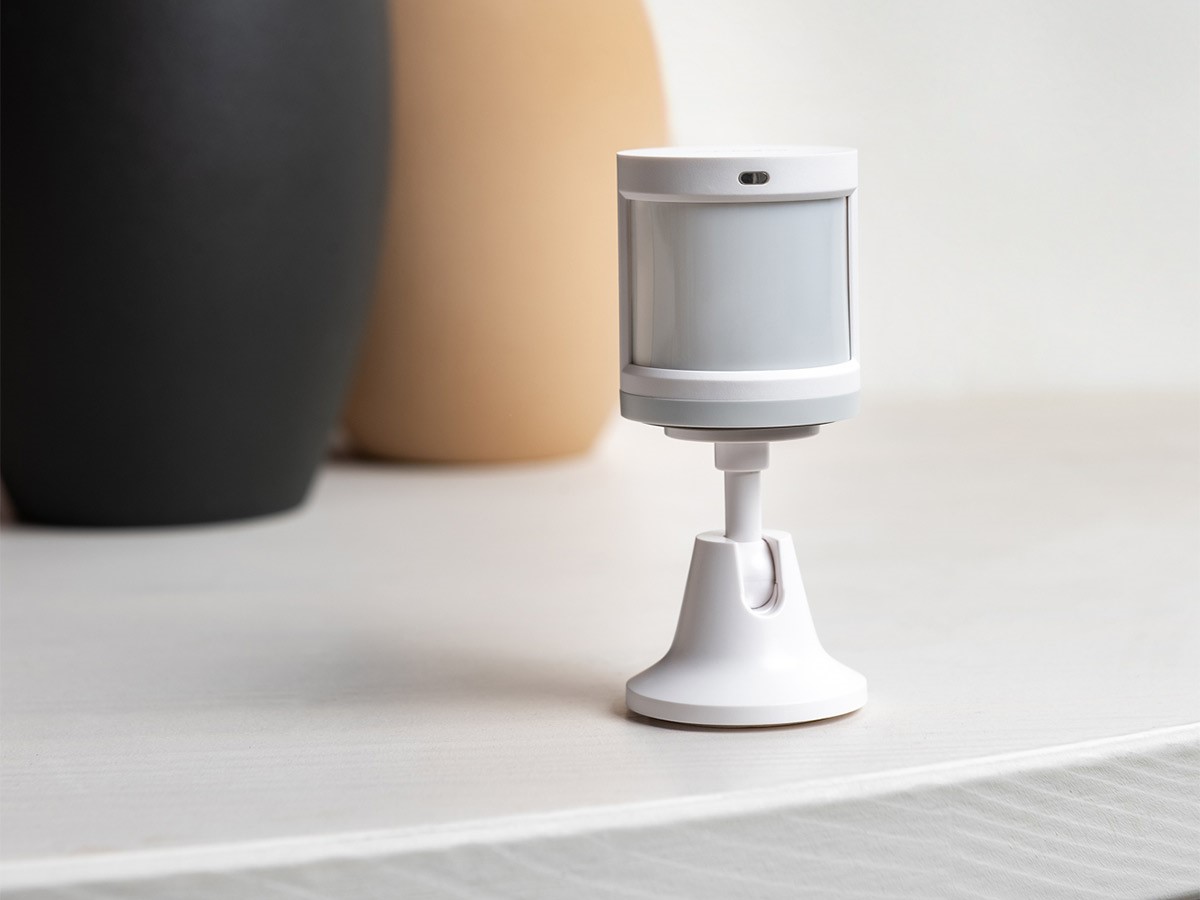Home>Furniture>Bedroom Furniture>How To Avoid Bed Sores


Bedroom Furniture
How To Avoid Bed Sores
Modified: October 18, 2024
Learn effective ways to prevent bed sores by investing in comfortable and supportive bedroom furniture. Protect your skin and promote better sleep.
(Many of the links in this article redirect to a specific reviewed product. Your purchase of these products through affiliate links helps to generate commission for Storables.com, at no extra cost. Learn more)
Introduction
Bed sores, also known as pressure ulcers or decubitus ulcers, are a serious and potentially painful condition that can develop when there is prolonged pressure on the skin. They most commonly occur in individuals who are bedridden or have limited mobility. Bed sores can be a significant concern, as they can lead to infection, delayed wound healing, and even tissue death in severe cases.
Understanding the causes and risk factors for bed sores is crucial for their prevention and early intervention. By implementing proper prevention strategies and recognizing the warning signs, you can ensure the well-being and comfort of individuals who may be at risk for developing bed sores.
In this article, we will discuss the causes, risk factors, and prevention measures for bed sores. We will also explore the importance of maintaining proper hygiene, regularly changing positions, using specialized support surfaces, implementing nutritional interventions, and recognizing the warning signs. Additionally, we will touch upon the treatment options available for individuals who have developed bed sores.
By the end of this article, you will have a comprehensive understanding of bed sores and be equipped with the knowledge to prevent, recognize, and address them effectively.
Key Takeaways:
- Preventing bed sores involves maintaining proper hygiene, regularly changing positions, using specialized support surfaces, implementing nutritional interventions, and recognizing warning signs. By addressing these factors, the risk of bed sore development can be significantly reduced.
- Early intervention is crucial in managing bed sores. Recognizing warning signs and implementing timely treatment, such as pressure redistribution, wound cleaning, and antibiotics, can prevent further damage and promote healing.
Read more: How To Heal Bed Sores
What are bed sores?
Bed sores, also known as pressure ulcers or decubitus ulcers, are localized injuries to the skin and underlying tissues due to prolonged pressure on specific areas of the body. They are typically caused by immobility, friction, or a combination of both.
When pressure is applied to the skin, the blood flow to that area is reduced. Over time, the lack of blood supply leads to tissue damage and eventually the formation of a bed sore. Areas of the body that are commonly affected by bed sores include the bony prominences like the hips, heels, elbows, and tailbone.
Bed sores can range from mild to severe, with four stages of progression:
- Stage 1: The skin may appear red, discolored, or have mild swelling. It may feel warmer or cooler to the touch than the surrounding skin.
- Stage 2: The skin may have a shallow open wound or a blister-like appearance. It may be painful or itchy.
- Stage 3: The wound extends through the full thickness of the skin and into the underlying subcutaneous tissue. It may appear as a deep crater or have a brownish color.
- Stage 4: The wound extends deeper into the muscle, bone, or joint. It may have a blackened appearance due to tissue death (necrosis).
Bed sores can be extremely uncomfortable and even debilitating for individuals. They can cause pain, limited mobility, and emotional distress. In severe cases, bed sores can lead to serious complications such as cellulitis, bone and joint infections, and sepsis.
It’s important to note that bed sores are not limited to individuals who are bedridden. They can also develop in people who have limited mobility, such as those who are confined to a wheelchair or have difficulty changing positions independently.
Now that we understand what bed sores are and the potential complications they can cause, let’s delve into the common causes of bed sores in the next section.
Causes of bed sores
Bed sores develop when there is prolonged pressure on specific areas of the body. This pressure can cause damage to the skin and underlying tissues, leading to the formation of bed sores. However, pressure is not the sole cause of bed sores. There are several other contributing factors that increase the risk of developing these ulcers.
The main causes of bed sores include:
- Pressure: Prolonged pressure on the skin due to lying or sitting in the same position for extended periods is the primary cause of bed sores. The pressure restricts blood flow to the affected area, leading to tissue damage.
- Friction: Friction occurs when the skin rubs against another surface, such as bed sheets or clothing. Friction can worsen the effects of pressure and increase the risk of developing bed sores.
- Shear: Shear occurs when the skin moves in one direction while the underlying tissue moves in another. This action can cause damage to the blood vessels and tissues, further increasing the risk of bed sore development.
- Moisture: Excessive moisture on the skin can soften the skin and make it more susceptible to damage. It can also cause skin breakdown and increase the risk of infection.
- Malnutrition and dehydration: Poor nutrition and inadequate fluid intake can weaken the skin and impair its ability to heal. Malnutrition and dehydration can also lead to overall compromised health, making individuals more prone to developing bed sores.
- Reduced sensation: Medical conditions that affect sensation, such as diabetes or spinal cord injuries, can inhibit an individual’s ability to feel pain or discomfort. This loss of sensation makes it more challenging to detect early signs of developing bed sores.
- Decreased mobility: Individuals with limited mobility, whether due to a medical condition or injury, are at a higher risk for developing bed sores. The inability to change positions frequently puts excessive pressure on certain areas, increasing the likelihood of skin breakdown.
It is important to understand the causes of bed sores to effectively prevent their development. By addressing these contributing factors, implementing preventive measures, and maintaining proper hygiene, you can significantly reduce the risk of bed sore occurrence. In the next section, we will discuss the risk factors associated with bed sores.
Risk factors for bed sores
While anyone can develop bed sores under the right circumstances, certain individuals are more susceptible than others. Understanding the risk factors associated with bed sores can help identify those who need extra attention and implement preventive measures accordingly.
The primary risk factors for bed sores include:
- Immobility: Individuals who are bedridden or have limited mobility are at the highest risk for developing bed sores. The inability to change positions frequently increases pressure on specific areas of the body, leading to tissue damage.
- Advanced age: Elderly individuals tend to have thinner, more fragile skin, which makes them more prone to skin breakdown. Age-related conditions such as reduced blood flow and chronic illnesses can also contribute to the development of bed sores.
- Chronic medical conditions: Certain medical conditions can increase the risk of bed sores. These include diabetes, which affects blood circulation and wound healing, as well as conditions that cause decreased sensation or impaired mobility, such as paralysis or neurological disorders.
- Poor nutrition: Inadequate intake of essential nutrients, including protein, vitamins, and minerals, can weaken the skin’s integrity and impair the body’s ability to repair damaged tissue. Malnourished individuals are more vulnerable to developing bed sores.
- Incontinence: The constant presence of urine or feces on the skin can lead to skin breakdown and increase the risk of bed sore development. Moisture, along with the chemicals present in urine and feces, can irritate the skin and impair its protective barrier.
- Smoking: Smoking reduces blood flow to the skin and inhibits wound healing. Smokers are more prone to developing bed sores and may experience delayed recovery if a sore does develop.
- Excessive weight or obesity: Excess weight can put additional pressure on the skin and underlying tissues, increasing the risk of developing bed sores. Limited mobility due to excess weight also plays a role in bed sore formation.
It is essential to assess the risk factors in individuals who are susceptible to bed sores and take appropriate preventive measures. Regular evaluation and monitoring can help identify those at risk and implement interventions to mitigate the likelihood of bed sore occurrence. In the next section, we will explore various strategies for preventing bed sores.
How to prevent bed sores
Preventing bed sores is crucial for maintaining the health and well-being of individuals who are at risk. By implementing a combination of strategies, you can significantly reduce the chances of developing bed sores. Here are some effective preventive measures:
Maintaining proper hygiene: Keeping the skin clean and dry is essential in preventing bed sores. Regularly wash and moisturize the skin using gentle, non-irritating products. Avoid harsh soaps and excessive scrubbing, as they can damage the skin’s protective barrier.
Regularly changing positions: Encourage individuals who are bedridden or have limited mobility to change positions regularly. Repositioning every two hours helps relieve pressure on specific areas. Use proper techniques, such as lifting instead of dragging, to minimize friction and shear.
Using specialized support surfaces: Utilize pressure-relieving devices such as specialized mattresses, overlays, and cushions. These products distribute pressure evenly and reduce the risk of developing bed sores.
Nutritional interventions: Ensure individuals receive a well-balanced diet that includes an adequate intake of protein, vitamins, and minerals. Proper nutrition supports skin health and facilitates wound healing. Consider consulting with a registered dietitian for personalized dietary recommendations.
Managing moisture: Keep the skin dry and free from excess moisture. Use absorbent pads or briefs for individuals with incontinence. Change wet or soiled bedding promptly to prevent prolonged exposure to moisture.
Implementing proper wound care: If an individual already has a wound or sore, follow appropriate wound care practices. Cleanse the wound regularly, use appropriate dressings, and seek professional medical advice if needed.
Encouraging regular exercise and movement: Even individuals with limited mobility can engage in exercises that promote circulation and muscle strength. Gentle range-of-motion exercises can help prevent bed sores by improving blood flow and reducing pressure on specific areas.
Promoting good communication: Regularly communicate with individuals and their caregivers about any discomfort or changes in skin condition. Promptly address any concerns related to the development of bed sores.
Remember, preventing bed sores requires a proactive and multi-faceted approach. It is essential to tailor the preventive measures based on the individual’s specific needs and risk factors. By implementing these strategies consistently, you can minimize the risk of bed sore development and enhance the overall quality of life for those at risk.
In the next sections, we will discuss maintaining proper hygiene, regularly changing positions, using specialized support surfaces, implementing nutritional interventions, and recognizing the warning signs of bed sores in more detail.
Maintaining proper hygiene
Maintaining proper hygiene plays a crucial role in preventing bed sores. By ensuring that the skin is clean and dry, you can reduce the risk of skin breakdown and infection. Here are some important steps to consider:
Regular bathing: Bathing individuals who are bedridden or have limited mobility can be challenging, but it is essential for maintaining good hygiene. Use warm (not hot) water and mild, non-irritating cleansers. Gently wash the skin, paying close attention to areas susceptible to bed sores, such as the buttocks, hips, and heels. Pat dry the skin with a soft towel to avoid friction.
Moisturizing the skin: After bathing, apply a gentle moisturizer to keep the skin hydrated and supple. Dry skin is more prone to developing bed sores. Choose a moisturizer that is fragrance-free and suitable for sensitive skin.
Managing incontinence: Individuals with incontinence are at a higher risk of developing bed sores due to prolonged exposure to moisture. Regularly change wet or soiled briefs or incontinence pads and clean the skin thoroughly. Apply a barrier cream to protect the skin from irritation caused by urine or feces.
Inspecting the skin: Regularly check the skin for any redness, discoloration, or signs of irritation. Pay close attention to bony prominences and areas under medical devices, such as oxygen tubing or splints. If any changes are noticed, take appropriate steps to relieve pressure and seek medical advice if necessary.
Avoiding harsh soaps and excessive scrubbing: Harsh soaps and vigorous scrubbing can damage the skin’s protective barrier. Use gentle, pH-balanced cleansers and avoid excessive rubbing or scrubbing. This helps prevent irritation and inflammation that can contribute to the development of bed sores.
Using soft, breathable bedding: Choose bedding made of soft, breathable materials to reduce friction and promote air circulation. Avoid rough, scratchy fabrics that can irritate the skin. Regularly change and launder bedding to maintain cleanliness and prevent the accumulation of bacteria or allergens.
Regularly cleaning medical equipment: If medical equipment is used, such as wheelchairs, cushions, or splints, ensure they are regularly cleaned and sanitized. This prevents the transfer of bacteria or other pathogens that can cause skin infections and compromise skin health.
By maintaining proper hygiene, you can minimize the risk of developing bed sores and keep the skin healthy. It is important to approach hygiene practices with gentleness and sensitivity, taking into account the individual’s comfort and specific needs.
In the next section, we will discuss the importance of regularly changing positions to prevent bed sores.
Change your position frequently, use pressure-relieving devices, keep skin clean and dry, and maintain a healthy diet to avoid bed sores.
Regularly changing positions
Regularly changing positions is a crucial preventive measure in reducing the risk of bed sores. By redistributing pressure on the body, you can relieve stress on specific areas and promote healthy circulation. Here are some important considerations to keep in mind:
Establish a repositioning schedule: Create a schedule that outlines when and how often position changes should occur. The frequency of repositioning will depend on the individual’s overall health, mobility, and risk of developing bed sores. For most individuals, repositioning every two hours is a good guideline to follow.
Implement proper lifting techniques: When repositioning an individual, it is important to use proper lifting techniques to minimize friction and shear. Encourage caregivers to use their legs and maintain good posture while assisting with positioning changes. It may be necessary to involve multiple caregivers or use assistive devices to ensure safe and comfortable transfers.
Use pillows or foam wedges: Place pillows or foam wedges strategically to support the body and relieve pressure on specific areas. For example, use pillows to cushion bony prominences such as the heels, hips, and elbows. These supportive devices can help maintain proper body alignment and reduce the risk of tissue breakdown.
Encourage active movement: If individuals are able to move independently, encourage them to change positions on their own whenever possible. Promoting active movement helps stimulate circulation and reduces the constant pressure on certain areas. Even simple movements such as wiggling toes, flexing muscles, or shifting weight can be beneficial.
Utilize assistive devices: Depending on the individual’s mobility and physical capabilities, assistive devices such as transfer boards, slide sheets, or mechanical lifts may be used to safely reposition individuals without causing undue strain or friction on the skin.
Consider adjustable beds: Adjustable beds can be beneficial for individuals who spend a significant amount of time lying down. These beds allow for changes in position, elevation, and support, reducing the risk of prolonged pressure on any particular area of the body.
Regularly changing positions is a simple yet powerful strategy in preventing bed sores. It helps minimize the concentration of pressure on vulnerable areas, promotes blood circulation, and allows the skin time to recover from any localized pressure. By incorporating regular repositioning into the daily routine, you can greatly reduce the risk of bed sore formation.
In the next section, we will discuss the importance of using specialized support surfaces to prevent bed sores.
Using specialized support surfaces
Using specialized support surfaces is an effective preventive measure for individuals at risk of developing bed sores. These surfaces help distribute pressure evenly, reduce friction and shear, and provide optimal support to vulnerable areas. Here are some key points to consider:
Pressure-relieving mattresses: Pressure-relieving mattresses, such as air mattresses or foam mattresses with pressure redistribution properties, are designed to minimize pressure on the body. These mattresses use air or foam cells that can be adjusted to provide customized support and reduce the risk of developing bed sores.
Alternating pressure mattresses: Alternating pressure mattresses feature alternating air cells that constantly inflate and deflate, redistributing pressure across different areas of the body. This cyclic pressure helps promote blood flow and reduce the risk of tissue damage.
Low-air-loss mattresses: Low-air-loss mattresses have a system of interconnected air cells that allow air to circulate underneath the body. This feature helps maintain a cool and dry environment, reduces friction, and promotes healing.
Gel overlays and cushions: Gel overlays and cushions provide additional support and distribute pressure evenly across the body. The gel material conforms to the shape of the individual, reducing pressure on specific areas and minimizing the risk of skin breakdown.
Egg crate foam: Egg crate foam mattress toppers or overlays have a textured surface that helps reduce pressure and enhance air circulation. These affordable options can be placed on top of a regular mattress to provide some pressure redistribution.
Water-filled pads: Water-filled pads are placed on top of a mattress or chair cushion to provide a cushioning effect. The water inside the pad adjusts to the body’s contours and helps distribute pressure more evenly.
Customized support surfaces: In some cases, individuals may require custom-made support surfaces, such as heel protectors or specialized wheelchair cushions, to address specific areas of vulnerability. These customized solutions provide targeted support and reduce pressure on critical areas.
It is important to consult with healthcare professionals, such as wound care specialists or occupational therapists, to determine the most suitable support surface for each individual. Their expertise can help identify the best options based on the person’s condition, level of mobility, and overall risk factors for developing bed sores.
Using specialized support surfaces in combination with regular repositioning can significantly reduce the risk of bed sore development. By distributing pressure evenly and providing targeted support, these surfaces help maintain optimal skin integrity and promote overall comfort for individuals at risk.
In the next section, we will explore the role of nutritional interventions in preventing bed sores.
Nutritional interventions
Nutrition plays a vital role in maintaining skin health and preventing bed sores. Adequate nutrient intake supports the body’s ability to repair and regenerate damaged tissues, enhance immune function, and promote overall well-being. Here are some important nutritional interventions to consider:
Protein-rich diet: Protein is essential for wound healing and tissue repair. Encourage individuals at risk of bed sores to consume an adequate amount of high-quality protein sources such as lean meats, poultry, fish, dairy products, eggs, legumes, and tofu. Protein supplements may be recommended for individuals who have difficulty meeting their protein needs through diet alone.
Essential vitamins and minerals: Proper intake of vitamins and minerals is crucial for skin health and wound healing. Ensure individuals consume a well-balanced diet that includes a variety of fruits, vegetables, whole grains, and low-fat dairy products to meet their micronutrient needs. In some cases, healthcare professionals may prescribe specific vitamin and mineral supplements based on individual requirements.
Adequate hydration: Staying well-hydrated is important for maintaining skin health and preventing dryness. Encourage individuals to drink plenty of fluids throughout the day, unless otherwise contraindicated by medical conditions.
Omega-3 fatty acids: Omega-3 fatty acids have anti-inflammatory properties and can support skin health. Encourage individuals to consume fatty fish (such as salmon or mackerel), flaxseeds, chia seeds, and walnuts, which are rich sources of omega-3 fatty acids.
Collagen supplementation: Collagen is a protein that plays a significant role in skin structure and elasticity. Collagen supplements may help promote skin integrity and support wound healing. However, it is important to consult with healthcare professionals before starting any supplementation regimen.
Monitoring caloric intake: Ensure individuals consume an appropriate number of calories to meet their energy needs. Proper caloric intake supports overall health and promotes healing and tissue repair.
Consulting a registered dietitian: For individuals with complex nutritional needs or those who require specialized interventions, consulting a registered dietitian is recommended. They can provide personalized dietary recommendations and guidance based on individual preferences, medical conditions, and nutritional requirements.
It is important to note that nutritional interventions alone may not prevent bed sores. They should be combined with other preventive measures, such as maintaining proper hygiene, regularly changing positions, and using specialized support surfaces, to achieve optimal results.
In the next section, we will discuss how recognizing the warning signs of bed sores can help with early intervention and prevention.
Recognizing the warning signs
Early recognition of the warning signs of bed sores is essential for timely intervention and prevention of further damage. By closely monitoring the skin and paying attention to any changes, you can take prompt action to prevent the development of bed sores or address them at an early stage. Here are some key warning signs to be aware of:
Redness or discoloration: One of the earliest signs of a potential bed sore is redness or discoloration of the skin. Pay attention to areas that are regularly under pressure, such as the buttocks, hips, heels, and back. Discoloration may appear as purple, blue, or darker skin tone in individuals with darker skin.
Swelling or edema: If the skin in specific areas becomes swollen, it may indicate tissue damage or inflammation. Swelling may be accompanied by warmth or tenderness in the affected area.
Changes in skin texture or temperature: Notice any changes in the texture or temperature of the skin. The skin may feel different from the surrounding areas, such as cooler or warmer, or it may become rough or dry.
Blisters or open sores: The development of blisters or open sores is a more advanced stage of a bed sore. These may appear as fluid-filled sacs or broken skin. It is crucial to address these signs promptly to prevent further progression.
Pain or discomfort: Individuals may experience pain or discomfort in specific areas that are under pressure. They may complain of tenderness, itching, or a burning sensation. Even if these symptoms are mild, they should not be ignored.
Changes in sensation: Individuals with reduced sensation due to certain medical conditions or injuries may not be able to feel pain or discomfort. In such cases, observe for any changes in skin color, texture, or temperature, as well as any signs of swelling or skin breakdown.
Increased body temperature: In some cases, the development of a bed sore may be accompanied by an elevated body temperature or signs of infection, such as red streaks, pus, or a foul odor. These signs should be taken seriously and prompt medical attention should be sought.
Regularly and thoroughly inspect the skin of individuals at risk for bed sores. Document any changes and communicate them with healthcare professionals or caregivers. Early detection and intervention can prevent further damage and potential complications.
In the next section, we will discuss the treatment options available for managing bed sores.
Treating bed sores
Timely and appropriate treatment is crucial for managing bed sores and promoting healing. The specific treatment approach will depend on the stage of the bed sore, overall health status of the individual, and any underlying medical conditions. Here are some common treatment options for bed sores:
Pressure redistribution: The first step in treatment is relieving pressure on the affected area. This may involve using specialized support surfaces, such as pressure-relieving mattresses or cushions, and ensuring regular repositioning to minimize further damage to the tissue.
Wound cleaning: Proper wound cleaning is essential to remove debris, bacteria, and dead tissue from the bed sore. This can be done using gentle cleansers and sterile saline solution. Avoid using harsh antiseptic solutions, as they can damage healthy tissue.
Wound dressings: Depending on the stage and characteristics of the bed sore, healthcare professionals may recommend various types of dressings. These can include hydrocolloid dressings, foam dressings, alginate dressings, or specialized wound gels. The primary goal of dressings is to maintain a moist healing environment and protect the wound from external contaminants.
Debridement: In some cases, if the bed sore has significant dead tissue or is infected, healthcare professionals may perform debridement. This involves removing the necrotic tissue to facilitate wound healing. Debridement can be done through various methods, including surgical debridement, enzymatic debridement, or autolytic debridement.
Antibiotics: If an infection is present in the bed sore or suspected, healthcare professionals may prescribe antibiotics to help fight the infection. Antibiotics may be given orally, topically, or through intravenous administration, depending on the severity of the infection.
Positive pressure wound therapy: For more advanced or severe bed sores, healthcare professionals may recommend the use of a specialized device that delivers negative pressure to the wound. This helps remove excess fluid, promote blood flow, and enhance healing.
Surgical intervention: In some cases, surgical intervention may be necessary, especially if the bed sore is deep, does not respond to conservative treatments, or if there is underlying tissue damage. Surgical procedures may involve tissue grafts, flap reconstruction, or other techniques to facilitate wound closure.
It is important to note that treatment of bed sores should be done under the guidance and supervision of healthcare professionals. They will evaluate the specific circumstances and determine the most appropriate treatment plan tailored to the individual’s needs. Regular monitoring and follow-up visits are essential to assess the progress of healing and make any necessary adjustments to the treatment approach.
Remember that prevention is always better than treatment. By implementing preventive measures and addressing early warning signs, you can minimize the likelihood of developing bed sores and avoid the need for extensive treatment. In the concluding section, we will summarize the key points discussed throughout the article.
Conclusion
Bed sores, also known as pressure ulcers or decubitus ulcers, are a serious concern for individuals who are bedridden or have limited mobility. These localized injuries to the skin and underlying tissues can lead to pain, infection, and tissue death if left untreated.
Throughout this article, we have explored the causes, risk factors, and prevention measures for bed sores. We have discussed the importance of maintaining proper hygiene, regularly changing positions, using specialized support surfaces, implementing nutritional interventions, and recognizing the warning signs early on.
Maintaining proper hygiene, such as regular bathing and moisturizing, helps keep the skin clean and reduces the risk of skin breakdown. Regularly changing positions, utilizing specialized support surfaces, and implementing proper nutrition are all vital in redistributing pressure, improving circulation, and supporting wound healing.
Recognizing the warning signs of bed sores, including redness, swelling, changes in skin texture or temperature, and the development of blisters or sores, allows for timely intervention and prevention of further damage. Treatment options for bed sores may include pressure redistribution, wound cleaning and dressings, debridement, antibiotics, and, in more severe cases, surgical intervention.
Prevention is key when it comes to bed sores. By implementing a combination of preventive measures, individuals at risk can significantly reduce their chances of developing bed sores. It is essential to create a care plan tailored to each individual’s needs, considering their risk factors, mobility level, and overall health status.
In conclusion, bed sores can be prevented with proper care and attention. By maintaining proper hygiene, regularly changing positions, utilizing specialized support surfaces, implementing nutritional interventions, and recognizing warning signs, we can minimize the risk of bed sore development and ensure the well-being and comfort of individuals at risk.
Remember, prevention is always better than treatment. By taking proactive measures and focusing on early intervention, we can promote healthy skin, enhance quality of life, and mitigate the potential complications associated with bed sores.
Frequently Asked Questions about How To Avoid Bed Sores
Was this page helpful?
At Storables.com, we guarantee accurate and reliable information. Our content, validated by Expert Board Contributors, is crafted following stringent Editorial Policies. We're committed to providing you with well-researched, expert-backed insights for all your informational needs.













